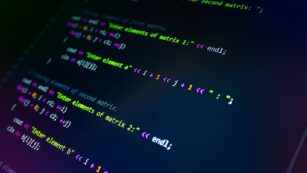Diving deeper into Python can transform a beginner into an adept programmer, capable of handling more complex challenges with ease. As one of the most popular programming languages today, Python offers a plethora of opportunities for those who master its intermediate concepts. This tutorial is designed to bridge the gap between basic knowledge and advanced proficiency, guiding learners through more sophisticated programming techniques that are essential in the professional world.
Python Intermediate Tutorial
Lists, Tuples, and Dictionaries
 Transitioning into intermediate Python, understanding the roles of lists, tuples, and dictionaries becomes crucial. These data structures are fundamental for effective coding in Python.
Transitioning into intermediate Python, understanding the roles of lists, tuples, and dictionaries becomes crucial. These data structures are fundamental for effective coding in Python.
Lists offer a mutable collection which means that they can be changed after creation. They are great for scenarios where you need to sequence elements and modify them dynamically, such as managing inventories or storing datasets for further manipulation.
Tuples, in contrast, are immutable and cannot be altered once created. This feature makes tuples a preferred choice for fixed data storage, like coordinates or options settings that you don’t expect to change within your application.
Sets and Frozensets
Sets and frozensets in Python provide powerful functionalities for managing unique collections, vital for tasks like data deduplication or membership testing.
Sets are mutable collections of unique elements. They excel in operations that require the elimination of duplicates, membership testing, and performing mathematical operations such as intersections, unions, and differences. Programmers find them useful in scenarios like removing duplicates from lists or finding common elements in two datasets.
Frozensets are the immutable counterparts to sets. They offer the same functionalities but do not allow modifications after creation. This characteristic is particularly helpful in situations where a collection of items needs to stay constant throughout the program, such as in keys of a dictionary used in caching mechanisms where stability of data is key.
Advanced Python Functions
Lambda Functions and Map/Reduce
 Lambda functions, also known as anonymous functions, offer a concise syntax for creating small, unnamed functions. These functions are defined using the
Lambda functions, also known as anonymous functions, offer a concise syntax for creating small, unnamed functions. These functions are defined using the lambda keyword followed by parameters, a colon, and an expression, all without the need for a standard def block. They play a crucial role in scenarios requiring quick, throwaway functions implemented with minimal code. For example, when sorting or filtering data.
Map and reduce functions complement lambda functions in Python, especially in data processing and transformation tasks. The map() function applies a specified function to each item of an iterable (like a list) and returns a list of the results. Using map(), programmers can execute complex transformations efficiently. For example, calculating the square of all numbers in a list can be done quickly using map(lambda x: x**2, numbers).
On the other hand, the reduce() function, originally from the functools module, is used to apply a particular function cumulatively to the items of an iterable. This function doesn’t return a new list but rather a single cumulative value. Employing reduce() is highly effective for operations like summing all elements in a list, demonstrated by reduce(lambda x, y: x+y, numbers).
Object-Oriented Programming in Python
 Following the exploration of advanced Python functions, this section delves into Object-Oriented Programming (OOP), a crucial concept for Python intermediate tutorials. Object-Oriented Programming revolutionizes coding by emphasizing modular, reusable code structures known as classes.
Following the exploration of advanced Python functions, this section delves into Object-Oriented Programming (OOP), a crucial concept for Python intermediate tutorials. Object-Oriented Programming revolutionizes coding by emphasizing modular, reusable code structures known as classes.
A class acts as a blueprint for creating objects (instances), each encapsulating its attributes and methods, enabling a clean and intuitive approach to structuring software. For example, if one needs to model a car in Python, they create a Car class with properties like color and mileage, and methods to perform operations like start and stop.
Modules and Packages
In developing proficiency with Python, understanding modules and packages is essential. Modules in Python are simply files with the .py extension containing Python code that can be imported into other Python scripts or interactive sessions. This feature allows for modular programming, which is pivotal in breaking down large programs into smaller, manageable, and organized segments. For instance, the math module includes mathematical functions and constants.
Packages, on the other hand, are namespaces that contain multiple packages and modules themselves. They are a way to structure Python’s module namespace by using “dotted module names”.


